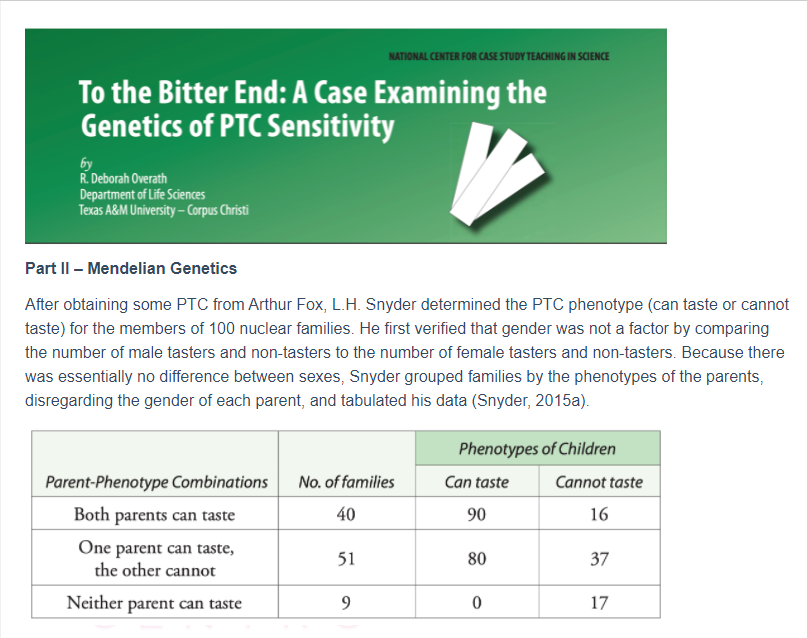The second parent-phenotype combination would appear to represent a group of test crosses. What ratios are expected from test crosses and what does each ratio represent? These data don’t seem to fit either of these expected ratios. How can you explain this?
Please answer number 6
Questions:
-
What kind of evidence would indicate that the ability to taste PTC is inherited?
-
Why was it important for Snyder to verify that males and females had similar proportions of tasters and non-tasters?
-
Why do couples who can taste PTC have children who cannot?
-
What is the significance of the fact that couples who cannot taste PTC never have children who can?
-
Based on these data, what can you conclude about PTC taste blindness? What is your evidence?
-
The second parent-
phenotype combination would appear to represent a group of test crosses. What ratios are expected from test crosses and what does each ratio represent? These data don’t seem to fit either of these expected ratios. How can you explain this?

Trending now
This is a popular solution!
Step by step
Solved in 2 steps






